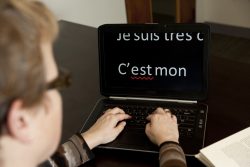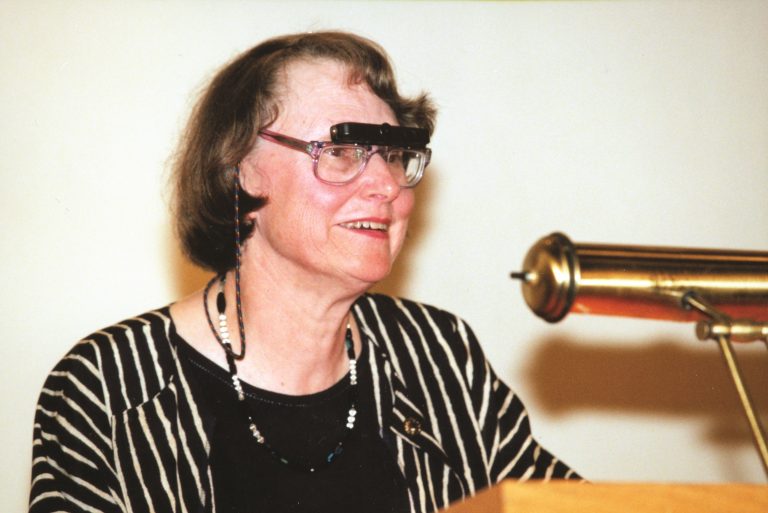Kurzweil Reader: OCR, scanning, and text-to-speech
Inventor Ray Kurzweil launched the first print-to-speech reading machine for the blind, the Kurzweil Reader, in 1976. Kurzweil credits a conversation he had with a blind seatmate on a plane for showing him the potential of an invention he’d been working on. His seatmate explained that his disability was not an obstacle for communicating or travelling, but it did prevent his access to ordinary printed material. This gave Kurzweil the idea for how to use software he and colleagues had developed, called omni-font optical character recognition (OCR). This software could recognize print in multiple styles.
Kurzweil and his team actually combined three new technologies to create the reading machine: OCR, flat-bed scanners, and text-to-speech synthesis. In Kurzweil’s words, “the Kurzweil Reading Machine (KRM) was able to read ordinary books, magazines, and other printed documents out loud so that a blind person could read anything he wanted."
On January 13, the iconic newsreader Walter Cronkite used it to read aloud his signature sign-off. One of the first individuals to acquire one was the musician Stevie Wonder. In his “Ted Talk,” blind Australian Law Professor Ron McCallum said of the first Kurzweil Reader he encountered, “For the first time, I could read what I wanted to read."
CNIB acquired one of the very first of Kurzweil’s reading machines in 1974 as a presentation from Gulf Canada. Former CNIB president Euclid Herie recalled that it had to be moved “on a dolly over to the auditorium. The thing looked like two steamer trunks and it did read, sort of, it could read certain fonts…So we saw the first years of what we now call adaptive technology...CNIB was definitely in on that from the beginning”
Kurzweil’s inventions, and his insight into their utility for blind people, have changed countless lives. He’s been called the “rightful heir to Thomas Edison,” whose invention of the phonograph led to talking books. In 1994, CNIB awarded Kurzweil the Winston Gordon Award of Excellence in Accessible Technology for “The Reading Edge”, a stand-alone scanner/reader that was introduced in 1992. (In addition to being a print reader, this reading machine included six keys for writing braille, allowing the user to name or edit a document, write notes, or correct the synthesized voice’s pronunciation exceptions dictionary.)
Video magnifiers and telescopes
Some readers with low vision are benefiting from innovations in optical technology, using video magnification and telescopic systems, either singly or together. These tools include video devices that use cameras to project images to a monitor or TV. Video camera magnifiers (sometimes referred to as closed-circuit TV or CCTV devices) come in various sizes and can be mounted on a stand, hand-held, or mounted on the body (known as head-mounted displays, or HMD). They come with various options to manipulate the text display, with controls for size, contrast, text colour, and background.
Using video technology, a student with low vision can have a camera-like telescopic device attached to a portable video magnifier to capture an image off the blackboard at the front of the classroom, and then enlarge it on a monitor on her desk.
“Bioptic” systems use a variety of telescopes that can be attached directly to prescription eyewear. These can contain computer chips and camera-style auto focus systems. Certain bioptic telescopes make mid-range activities such as reading music, or computer screens, easier.
Screen readers
A screen reader is software that transforms all visible content on a computer screen to synthesized speech or to braille. Screen reading software can also include screen magnifiers for people with low vision. They can run with many operating systems, and their cost ranges from free to more than $1,000. Some of the best known brands include JAWS, ZoomText and Window-Eyes. The free system NVDA (Non-Visual Desktop Access) screen reader can be used with free programs like Open Office and ThunderBird email.




